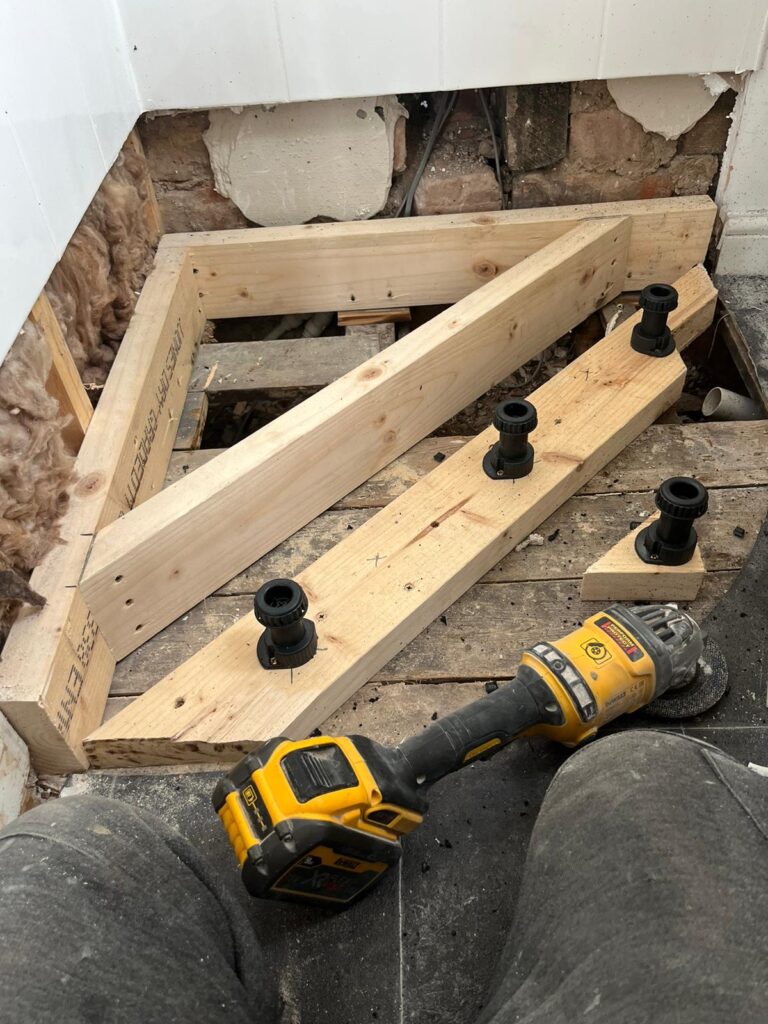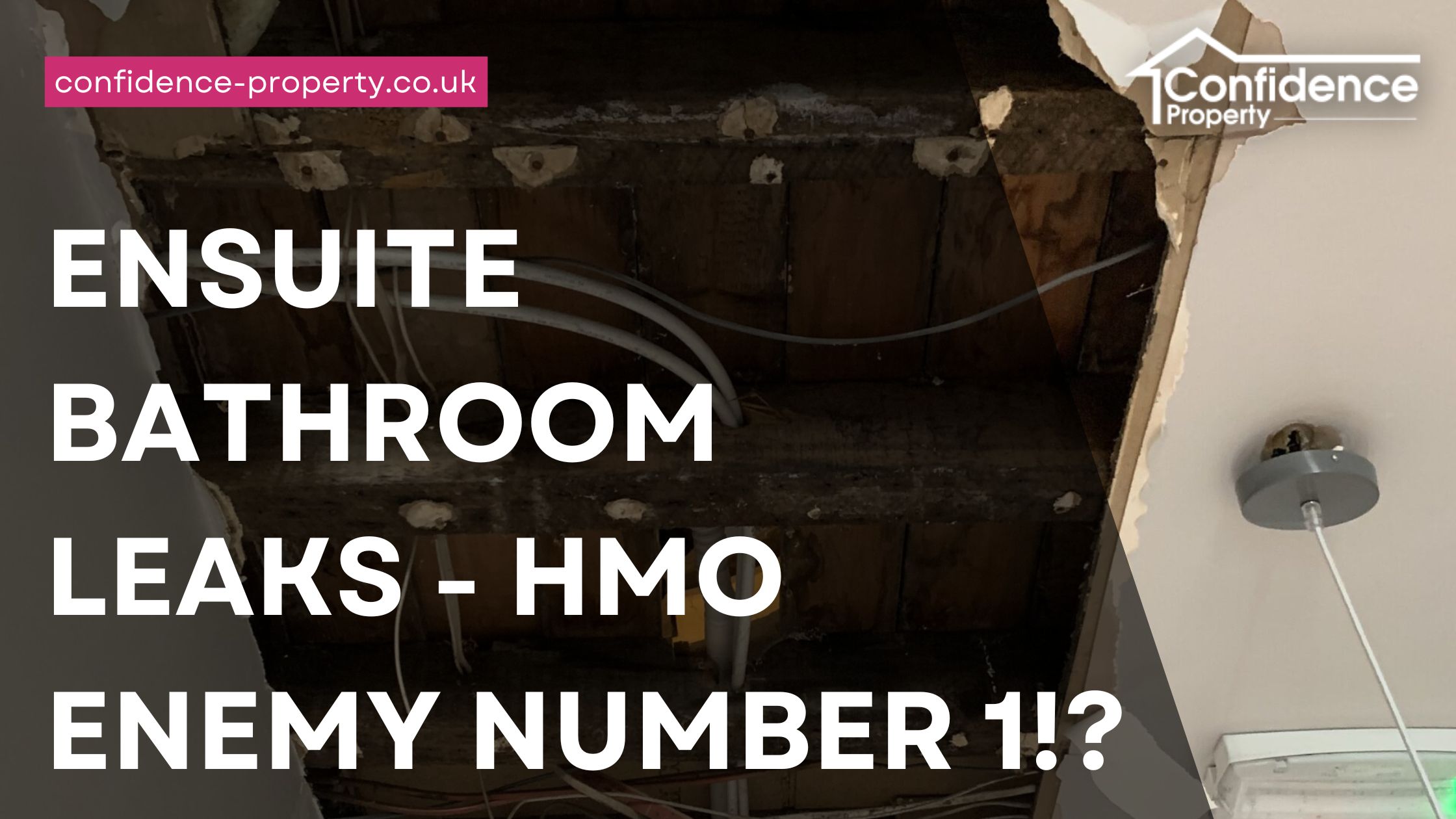Ensuite bathroom leaks are a common issue in HMO (House in Multiple Occupation) properties, frequently ranking as the primary maintenance concern for landlords. However, by implementing proactive measures, landlords can minimize the occurrence of leaks and reduce associated maintenance costs. Let’s explore practical strategies for preventing and addressing ensuite bathroom leaks in your HMO property.
The Common Causes of Ensuite Bathroom Leaks
- Blocked shower waste due to hair accumulation
- Missing grout between tiles
- Gaps in sealant around shower trays
- Lack of a solid base under the shower tray, leading to movement
- Loose push-fit connections in plumbing systems
- Use of push-fit waste pipes without welding
Get The Installation Right
Choosing the right plumber and ensuring proper installation are critical steps in preventing ensuite bathroom leaks. When selecting a contractor, consider factors such as:
- Experience and Expertise: Look for a contractor with extensive experience in HMO properties and check their qualifications and references.
- Reputation: Research the contractor’s reputation through reviews and testimonials to ensure reliability and professionalism.
- Insurance and Warranties: Verify the contractor’s insurance coverage and inquire about guarantees or warranties on workmanship and fixtures.
- For thermostatic showers ensure hot and cold feeds are connected correctly. We’ve had experience where the plumber installed them back to front, resulting in the T-bar being installed upside down, not working correctly and requiring remedial works.
Choose The Right Materials
Selecting high-quality materials is essential for preventing leaks. Consider the following:
- Material Quality: Opt for fixtures made from durable materials like brass or stainless steel to reduce the risk of corrosion and leaks.
- Sealant Quality: Use premium sealants and caulking materials to create watertight seals around fixtures and joints.
- Aquaboard Waterproofing: Moisture resistant plasterboard provides a waterproof, durable surface for tiling and enhance moisture resistance in ensuite bathrooms.
Choose The Right Design

At Confidence Property we always recommend installing a shower riser kit or wooden frame beneath the shower tray to give easy access to the shower waste without the need to lift floorboards or cut through the ceiling below.
We also recommend installing a dedicated water shut-off valve for each shower. This ensures that when maintenance is needed, only the affected shower needs to have its water supply turned off, sparing both the occupants and the engineer from the inconvenience of shutting off water to the entire property. This way, the engineer can efficiently manage the water supply without the need for repeated trips to the main shut-off point.
When designing HMO ensuites you should also consider water pressure, shower type (thermostatic vs. electric), and the availability of off-suite or shared bathrooms for emergency use.
Regular Inspections and Maintenance
Regular inspections are crucial for detecting and addressing potential issues before they escalate. During inspections, focus on:
- Blocked Shower Waste: Ensure that shower waste is regularly cleared of hair to prevent blockages.
- Pipes and Fixtures: Check for signs of corrosion, wear and tear, or loose fittings that may indicate potential leaks.
- Seals and Grout: Inspect seals and grout for signs of deterioration, as cracked or missing grout can indicate areas prone to leaks.
- Water Stained Ceilings: Test for dampness and investigate potential sources of water leakage.
Confidence Property provides this service to our HMO Landlords via means of communal cleans, end of tenancy inspections, interim inspections and ad-hoc property visits.
Educate Tenants about Ensuite Bathroom Leaks
Educating tenants on proper bathroom maintenance practices is essential for preventing leaks and preserving property integrity. Provide guidelines on:
- Emptying Shower Waste: Encourage tenants to regularly clear shower waste themselves to prevent blockages.
- Regular Cleaning: Promote regular cleaning to prevent the buildup of grime, mold, and mildew, which can compromise seals and lead to leaks.
- Prompt Reporting: Encourage tenants to report any signs of leaks or water damage promptly to facilitate timely repairs.
- Usage Guidelines: Educate tenants on responsible water usage practices to prevent unnecessary strain on plumbing systems.
Conclusion – Ensuite Bathroom Leaks
Ensuite bathroom leaks present significant challenges for landlords of HMO properties, often resulting in considerable repair costs and tenant dissatisfaction. However, by implementing proactive measures such as proper installation, regular inspections, and tenant education, landlords can minimize the occurrence of leaks and mitigate associated maintenance costs. Investing in preventative measures not only preserves property integrity but also enhances tenant satisfaction and retention in the long term.
If you would like any advice on your HMO en-suite installation or require assistance with inspections and maintenance, which are included as part of our full management service, please don’t hesitate to get in touch with us. Our experienced team at Confidence Property is here to support you and help you get the best out of your HMO.






